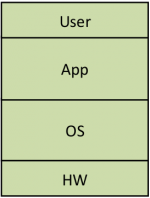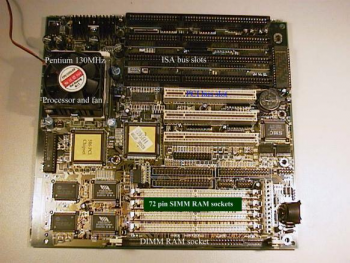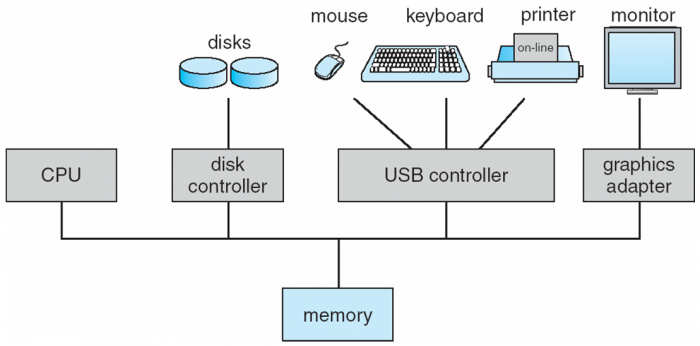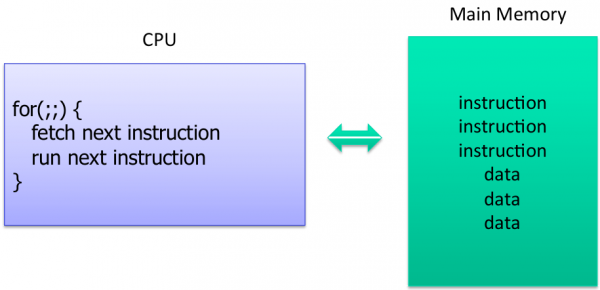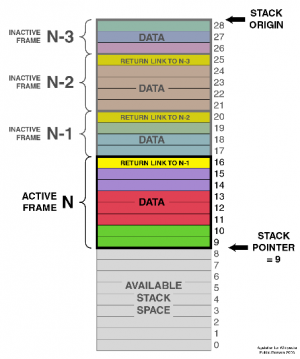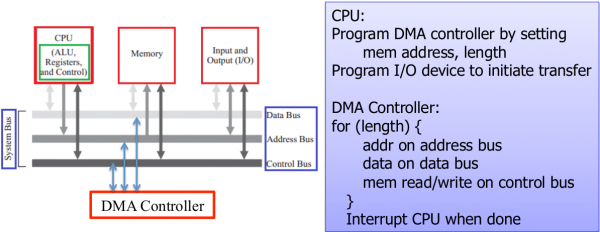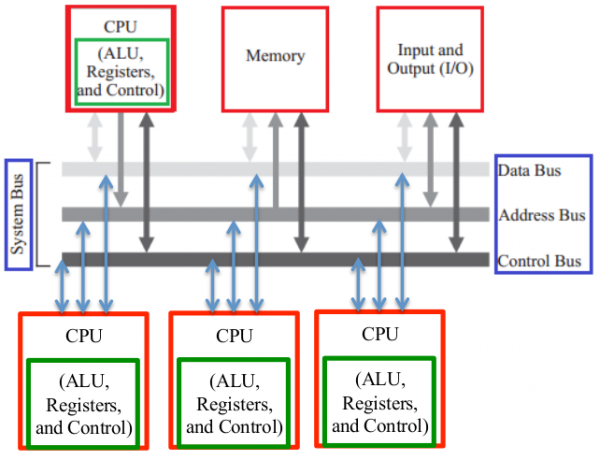cs438:cs-438_os_architecture
Table of Contents
Computer Architecture Overview
What is an OS?
Two popular definitions for OS
- Bottom-up perspective: resource manager/coordinator, manage your computer’s resources
- Top-down perspective: hardware abstraction layer, turn hardware into something that applications can use
What does hardware provide?
- Seen a glimpse of the functions OS provides
- But what hardware does it have to work with to provide those functions?
- Let's take a high level overview of how a typical computer system looks inside
- Different platforms have different chips: phone, PC, your DVD player, etc.
- But major concepts are the same
The x86 Platform
- Many processor architectures: Intel x86, ARM, Oracle Sparc, IBM Power, etc.
- We’ll use x86 as an exemplar
- The Android emulator uses an x86 Atom image
- Familiarity. Lots of online resources.
- Applies to most other architectures as well (with small differences)
- Besides, most of the OS code we will encounter is architecture agnostic
Typical PC Architecture
Computer Organization
Computer Organization: Abstract Model
- I/O: communicating data to and from devices
- CPU: digital logic for doing computation
- Memory: N words of B bits
The Stored Program Computer
- Often called the "Von Neumann" architecture
- Memory holds both instructions and data
- CPU interprets instructions
- Instructions read/write data
- “Instructions” are CPU-level instructions
Memory Access
- Memory accesses are synchronous
- Instruction stalls while memory is fetched
- Caches are used to reduce the performance hit
The Stack
- For implementing function calls
- Temporary storage area
- Saved register values, local variables, parameters
- Stack grows “downward” on x86
I/O Access
- Similar to memory access
- Except different control signals, so I/O devices know to respond (rather than memory)
- IN, OUT instructions are also synchronous
Interrupts
- I/O instructions synchronous, but hardware devices can be slow
- Reading from disk (milliseconds), waiting for a keystroke (hours?)
- Should CPU stay idle when waiting for device?
- Interrupts allow CPU to multitask while waiting
- Allows I/O to be asynchronous
- Programmable Interrupt Controller (PIC) allows more than one device to interrupt CPU
Direct Memory Access
- DMA allows CPU to do useful work while transferring data between disk and memory
- CPU programs (controls) DMA controller (or device directly)
- DMA controller gets ownership of the bus
- DMA controller produces mem read/write bus signals
Symmetric Multiprocessors (SMP)
cs438/cs-438_os_architecture.txt · Last modified: 2013/09/05 21:41 by jchung

